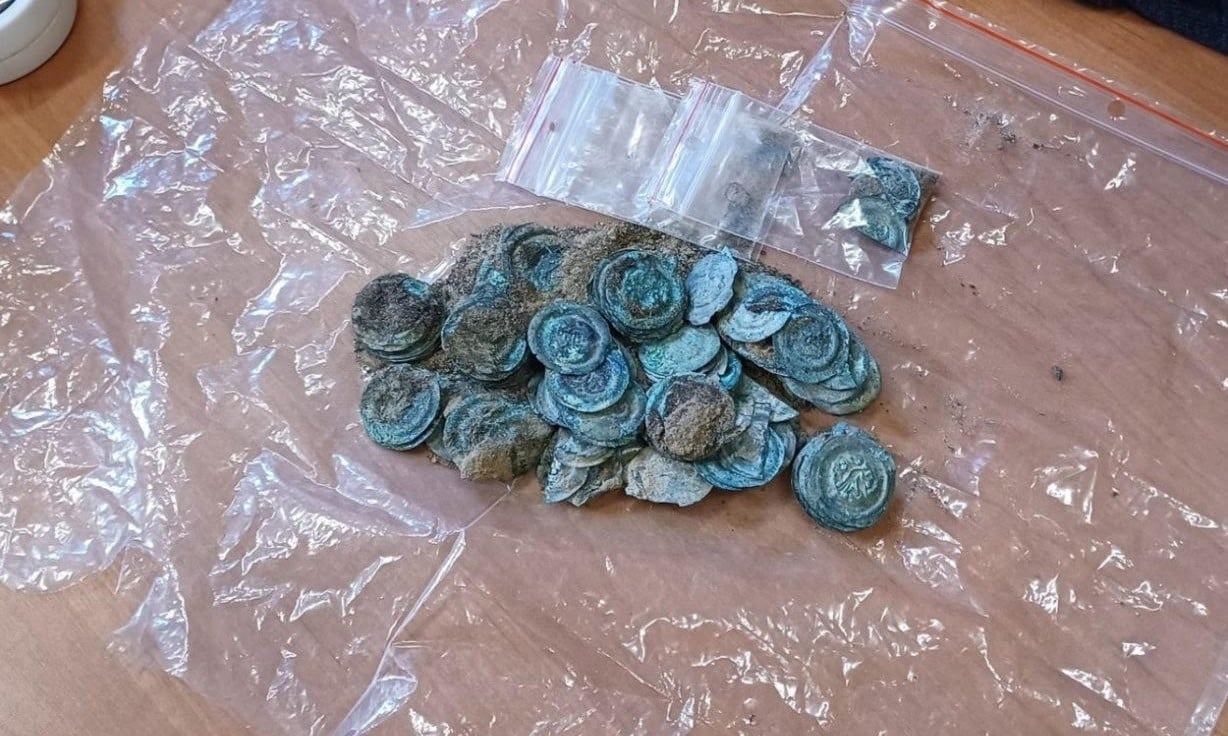
Archaeologists conducting research on an old burgage plot in Szprotawa, Poland, hit the jackpot—finding a stash of ancient coins. There are like 100 to 150 of these special coins, known as Silesian bracteates.
Back in the day, a burgage was a fancy term for a town rental property—a house on a small piece of land with a narrow street in front. While digging around, the archaeologists found a textile bag with a bunch of coins neatly stacked like little cylinders.
Discovery of the coins stacked together
After taking a good look, the experts found out these coins are mostly Silesian bracteates, and they were made between 1250 and 1300. They’re made from a thin plate on one side and a soft base on the other.
People in Silesia started making these after 1250, but they switched to thicker coins (called the quarterly) in the early 14th century.
These coins come from the workshops in Silesia, but their time in the spotlight was short. People used to trade them in pretty often, like once or twice a year. It’s like the old version of swapping your cash for the latest and greatest bills.
Details of the strike money
Back in the day, when people exchanged their old coins for new ones, they would get three new coins in return for four old ones. The fourth coin they didn’t get back was known as “strike money.” This coin was a kind of tax, and the person in charge of making the coins got to keep it.
This system functioned similarly to a demurrage, with people frequently hoarding their coins because they lost their value.
Who hid the coins?
According to Radosław Kuźbik, a specialist in this stuff, the big question now is who hid these coins, when, and why. Experts are working on figuring that out. They think it might have belonged to someone quite well-off, like a stash of spare money.
Finding these coins is a big deal for the region. There aren’t many coins like these around because, back then, they would melt them down regularly. So, it’s like a rare glimpse into the past.
But that’s not all they found! The dig in Szprotawa, Poland also uncovered signs of a bridge from the 15th to 16th century and bits of the original city walls from the 14th century. It’s like stepping back in time and discovering the secrets of the past!
See all the latest news from Greece and the world at Greekreporter.com. Contact our newsroom to report an update or send your story, photos and videos. Follow GR on Google News and subscribe here to our daily email!



